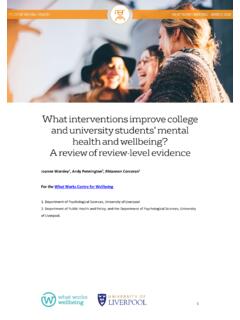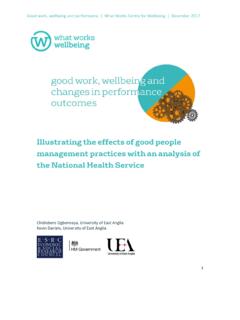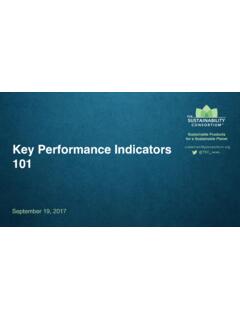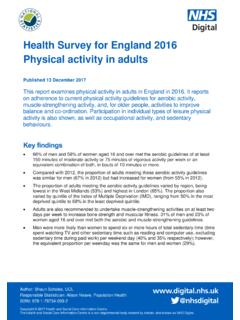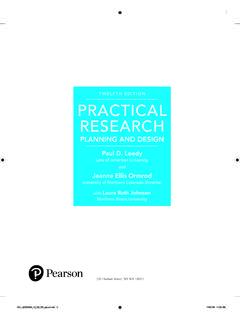Transcription of Workplace wellbeing question bank - What Works Wellbeing
1 Workplace Wellbeing question bank July 2020. Workplace Wellbeing question bank . The What Works Centre for Wellbeing helps people and communities to thrive by supporting decision-makers to understand what Wellbeing is; how to measure it;. and what Works to improve it. We can work with you, and others, to increase and apply knowledge to help organisations, communities, and people to thrive. Find out more We are an independent collaborating centre, bringing together decision-makers in government, local authorities, businesses, charities, funders, and academics, among others.
2 See our current partners What is this question bank ? The Workplace Wellbeing question bank includes a list of questions that can be used by employers to measure and monitor the Wellbeing of employees. By asking people directly about how they feel about various aspects of the job, employers can better target Wellbeing activities and programmes in the Workplace to improve Wellbeing . This bank is a collection of validated questions, which have been developed and used by various organisations to measure different aspects of Wellbeing . The bank includes questions that cover all relevant aspects of Wellbeing derived from existing frameworks of Wellbeing and For most of these questions there is national data available for you to compare the results for your employees against.
3 You can use these questions as the basis for your own questionnaire, tailoring and adapting it to the needs of your organisation and the specific circumstances of your employees and the sector your work in. Email us at for support to: customise your questionnaire - for more responses choose the right combination of questions - make the dara more relevant analyse and benchmark your results - turn evidence into action 1 Some of the evidence-based frameworks re-visited included: OECD Guidelines on Measuring the Quality of the Working Environment (OECD, 2017); Eurofound Job Quality Indices (Eurofound, 2015); PERMA Profiler (Butler & Kern, 2016) and its Workplace adaptation (Mayer, 2019); CIPD Good Work index (CIPD, 2020).
4 University of Cardiff How Good is My Job' model (Felstead et al. 2019); UK Health & Safety Executive's (HSE) Management Standards (HSE, 2017); BEIS Workplace Wellbeing and Performance Review (BEIS, 2014); DWP Framework for Voluntary Employer Reporting on Disability, Mental Health and Wellbeing (DWP, 2018). Workplace Wellbeing Page 2. What Works Centre for Wellbeing Workplace Wellbeing question bank . Using the question bank 1. Choosing the questions to include in your survey Questions have been identified to cover the main Wellbeing at work dimensions.
5 We recommend that your survey includes questions that cover all the main domains. We also recognise that longer surveys have their limitations. For example, we helped to develop a shorter survey that includes a much narrower subset of these questions, which has been recommended by the Department for Work and Pensions. Adding more detailed questions on one theme Your survey might also benefit from adding more detailed modules on specific themes. For example, you may be more interested in looking at the Wellbeing effects of irregular working hours which is difficult to capture through a single item.
6 Avoiding duplication of questions You may notice that some questions tap into the same, or very similar, indicators. You can make your questionnaire more efficient by incorporating only one. For example, the statements after I leave my work I keep worrying about job problems' ( ) and I find it difficult to unwind at the end of a workday' ( ) both measure negative spillovers of working life into employees' private lives. You can choose the one that best suits your sample of respondents. 2. Getting the wording and answer scales for each question right Adapting the wording of questions Because the questions are taken from a number of different surveys, you may want to make sure the question wording is as clear, consistent and relevant as possible, with appropriate preamble and definitions of terms, when using them in your survey.
7 This is possible to do, but to compare your responses with benchmark data you will need to make sure the questions' meaning and key words are not changed. Changing terms and pronouns To give an example, you may want to change You know what is expected of you at work'. (item ) to use the first person pronoun. It would then read: I know what is expected of me at work' to fit with the phrasing of other items in your survey. Similarly, you may find it useful to change terms such as your immediate boss' (item ) to your line manager' (item ) in order to harmonise the questions.
8 Clarifying terms and reducing bias Other terms might benefit from further clarification. For example, in the statement I have the tools I need to do my job effectively' ( ), the term tools' can be interpreted as internal resources such as knowledge and skills, while other respondents are likely to interpret it in terms of systems and equipment. Another example of a misinterpretation risk that can introduce response bias is the statement I might lose my job in the next 6 months' ( ). The item is aimed at capturing Workplace Wellbeing Page 3. What Works Centre for Wellbeing Workplace Wellbeing question bank .
9 Job insecurity caused by the possibility of being made redundant, but other respondents might think of losing their current job as a result of job promotion. In these cases, clarifying the meaning of the terms will help you obtain more valid results. You can add a clarification after the question , which allows for easier benchmarking. You can also adapt the wording of the question itself. Changing the response scales You might want to avoid confusing respondents by using only one response scale throughout the entire questionnaire. This is especially the case with longer questionnaires.
10 For some questions this is possible to do, while keeping the question meaning unchanged and then calibrating the responses to the benchmark data scale. Any change in scale will however make it more difficult to directly compare the results against the benchmarks. 3. Understanding how your survey results compare with national averages The majority of the questions presented here have been previously used in national and international specialised surveys representative of the British working population. In order to compare your own survey results directly with national averages, the questions included in this bank appear with the original form of words and response scales used in the national surveys.
